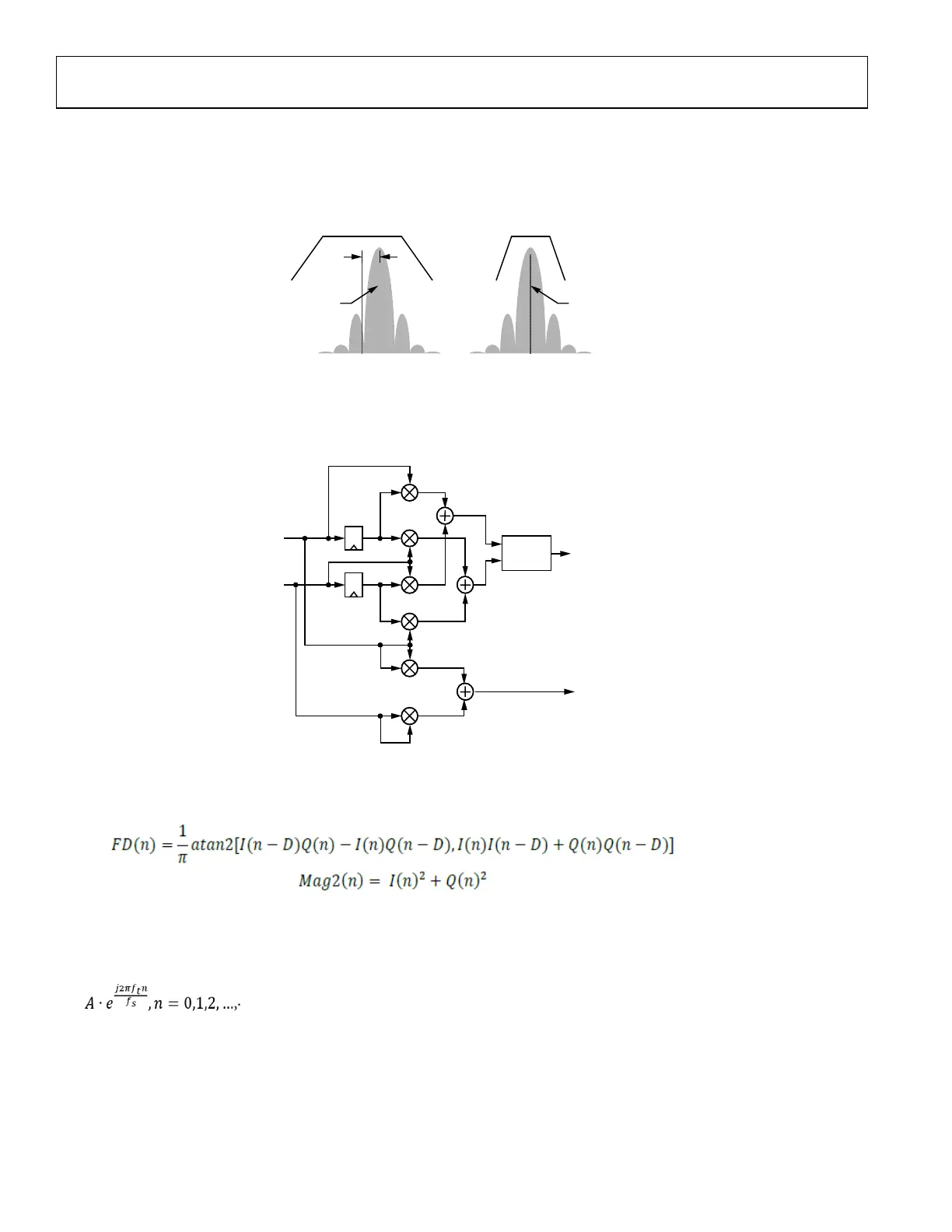UG-1828 Preliminary Technical Data
Rev. PrB | Page 186 of 277
This parameter is used to scale the higher power terms during the calculation of the auto-correlation matrix using transmit data d(n). It
is used to keep the nominal magnitude of each of the power terms about the same to avoid ill condition of the correlation matrix. The
scaling factor
could be defined as , where “std” stands for standard deviation. User could measure and then pass
the information through this parameter.
rxTxNormalizationLowerThreshold/rxTxNormalizationUpperThreshold
These are required parameters for the normalization of the magnitude and phase of the receive and transmit data. These thresholds are
used to pick a linear region for normalizing the data. The region chosen should be below the compression point but above the noise. In
the AM-AM and AM-PM plots shown in Figure 142, a possible choice of the linear region is highlighted in red. In general,
rxTxNormalizationUpperThreshold should be set to 0.5 of the peak signal amplitude and rxTxNormalizationLowerThreshold should be
set to 0.3 of the peak signal amplitude. Once they are set, the threshold values should be fixed and not vary from capture to capture.
Therefore, by knowing the peak transmit signal in dBFS, rxTxNormalizationUpperThreshold should be set to “peak Tx dBFS – 6 dB” and
rxTxNormalizationLowerThreshold should be set to “peak Tx dBFS – 10.5 dB”. Peak transmit signal is usually set at P1dB by adjusting
the Tx attenuation setting.
The user could enter those thresholds in dBFS through TES. If using API, the linear numbers should be used which can be calculated as
10
(threshold_dBFS/10)
.
immediateLutSwitching
When a new DPD solution is formed, the new solution is loaded into a spare LUT, which can then be switched with the active LUT.
There are two options regarding the LUT switching. When immediateLutSwitching is set to be “TRUE”, the new LUT swaps out the
active LUT immediately when ready. When immediateLutSwitching is set to be “FALSE”, after the updated LUT is available, LUT
swapping is triggered after the next data frame is completed. Note this only applies to TDD operations. FDD systems should always use
immediate LUT switching. Currently, it should always set to be “TRUE”.
useSpecialFrame
In order to achieve optimal performance, DPD must capture the peaks of the signal. Some standards allow for transmission of special
data that can be used for DPD estimation. In other cases, the baseband processor may know in advance that a frame will contain good
data for DPD estimation. In these cases, the user may choose to control which frames are used for DPD. The flag indicates that the user
will control the frames that DPD can capture. This is currently not supported so it should be disabled.
resetLuts
To start DPD operation from a known state, user should reset LUTs. By setting resetLuts to be 1, it sets most polynomial terms to be 0 to
remove the pre-distortion at the beginning of DPD operation.
User could configure the DPD post initial calibration parameters through TES as shown in Figure 178.
Figure 179. Configuring DPD Post Initial Calibration Parameters Through TES
BOARD CONFIGURATION
Besides configuring the DPD pre initial calibration and post initial calibration parameters, user should also configure 2 other parameters
related to the board configuration. These 2 parameters are externalLoopbackPeakPower and externalLoopbackPathDelay, which should
be provided to ADRV9001 before performing initial calibrations.
externalLoopbackPeakPower
It indicates the peak power of ORx input signal loop backed from the Tx output. For DPD to achieve an optimal performance, the ideal
externalLoopbackPeakPower should be set about -18dBm with a tolerance of ±5dBm. User could adjust the peak power by utilizing an
external step attenuator after power amplifier.

